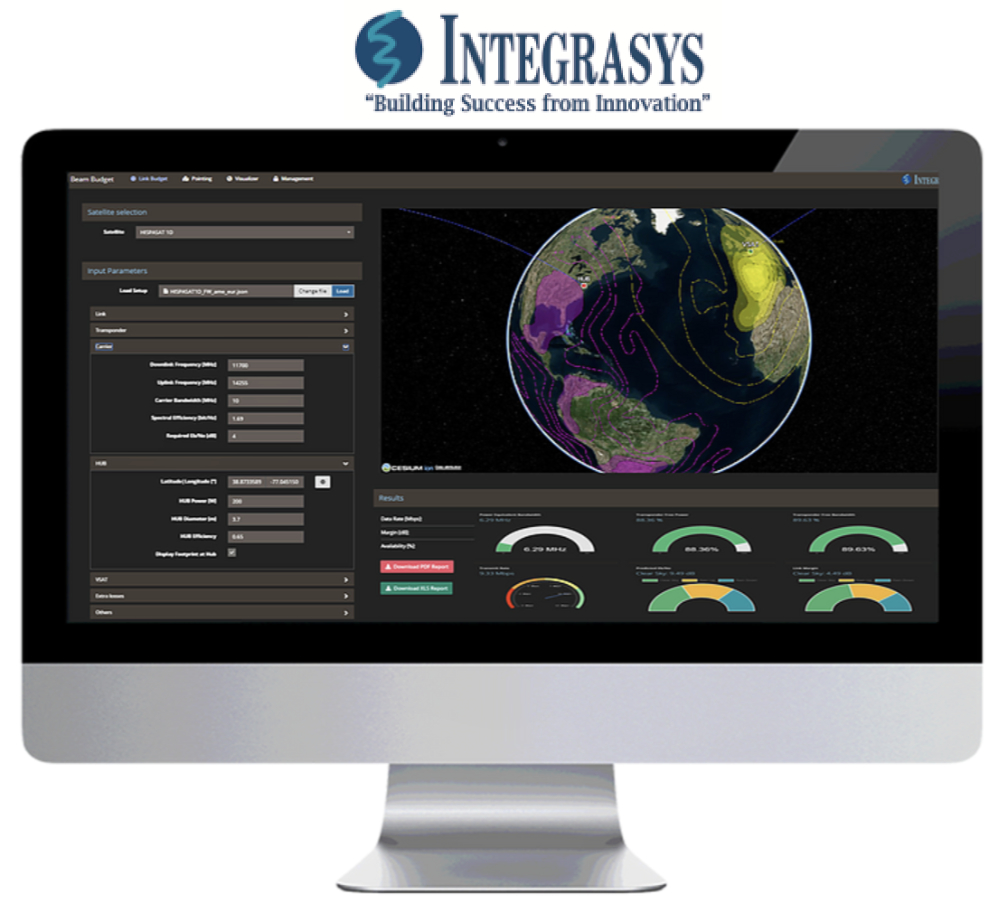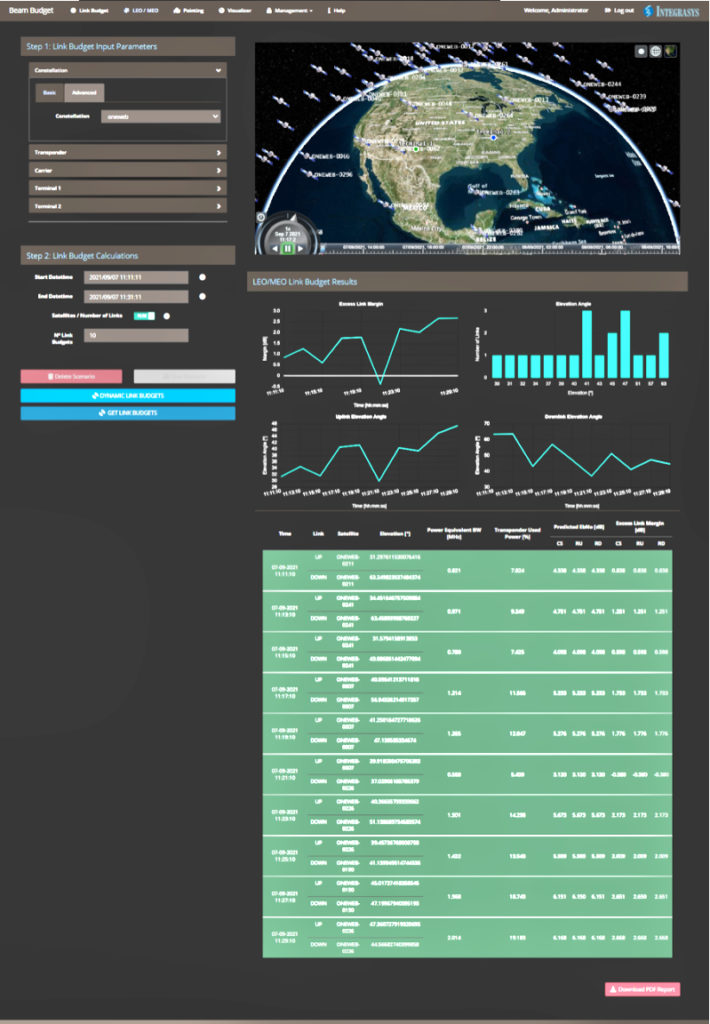
Beam Budget has been updated and, according to developer Integrasys, is an essential tool for New Space LEO and MEO constellations.
The company has completed the updating of the LEO option, in order to offer a flexible solution for these new constellations. Beam Budget enables the user to seamlessly manage a LEO network by simultaneously calculating several dynamic links in real-time, as well as selecting a period of time within which to obtain the necessary metrics, tall o ensure a reliable infrastructure.
The latest development brings an update on the constellations database. This update includes up-to-date constellations as well as the new feature of the laser inter-satellite link, creating a robust network design and taking advantage of assets and latest constellations in any orbit.
For example, a GEO satellite constellation can transmit to a smallsat constellation to optimize latency for a particular application. LEO and MEO assets can connect via Laser with GEOs to ensure resiliency and availability. The tool allows comparisons in a matter of clicks for varying constellation throughput and service for parabolic and flat antennas. Integrasys has also improved the LEO and MEO reporting capabilities, with a Dual analysis of the forward and return link, as well as detailed information about the beams and coverage. The metrics are represented graphically in order for sales teams to more easily understand the results and then export this data and reportto Excel or to a PDF.
The company has also developed a complete footprint that includes the satellite footprints and their frequency range, with the specific frequency ranges defined by the operator. High precision in the gain of each beam is also produced, not only in working with discrete 2dB contours between each band, but also interpolating the gain to the exact locations, tehreby allowing intermediate values and increasing the precision of the calculations.

